Matador Network's Blog, page 489
April 25, 2022
You Don’t Want To Miss This Epic Travelzoo Deal To Palm Springs

Taking a remote trip and secluding yourself from everyday life could be the perfect idea for your next getaway — and Palm Springs is the perfect destination, whether from Los Angeles or elsewhere. Pack up your bags and take a trip away from it all and enjoy every single minute of it. Take your secluded vacation to another level with this Travelzoo Palm Springs deal.
We hope you love this Palm Springs travel deal! Just so you know, Matador may collect a small commission from the links on this page if you decide to book a stay. Listed prices are accurate as of the time of publication.

Photo: Travelzoo

Photo: Travelzoo
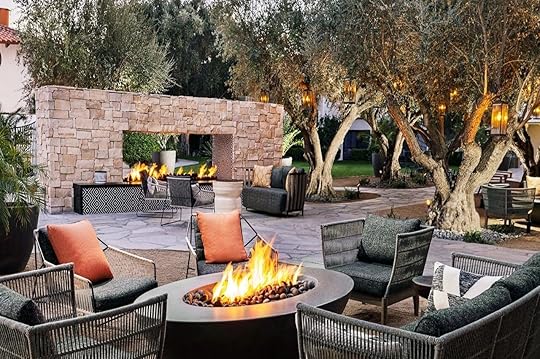
Photo: Travelzoo

Photo: Travelzoo

Photo: Travelzoo
When to travel: May through September
Fully refundable: Yes
The unique desert oasis luxury resort Miramonte Resort & Spa is located outside Palm Springs and in Indian Wells. This remote experience is set against the Santa Rosa Mountains. Dive into this incredible Travelzoo Palm Springs deal and take your relaxed vacation up a notch. With this deal, you can save over 50% on regular prices from May-September and be one of the first to stay in the resort’s newly renovated and upgraded rooms.
Stay, relax, rejuvenate and enjoy this luxury Travelzoo Palm Springs deal with a king or two queen rooms, either newly renovated or upgraded with views of the gardens. Check in from May through September and snag the deal of $139 per night on Sundays through Thursdays or $179 per night on Fridays through Sundays.
Soak up your time at this luxury resort and spa with sunrise walks, yoga, live entertainment, spa treatments under the stars, rejuvenating steam rooms, jeep tours, pool relaxation, and other activities. You can also enjoy high-end cuisine at Citrus & Palm restaurant and delicious cocktails and drinks at the Tavern Bar.
You won’t want to miss out on this once-in-a-lifetime Travelzoo Palm Springs deal. It’s time for you to sit back and relax. 
How To Travel With Your Baby and Use Parental Leave for a Vacation
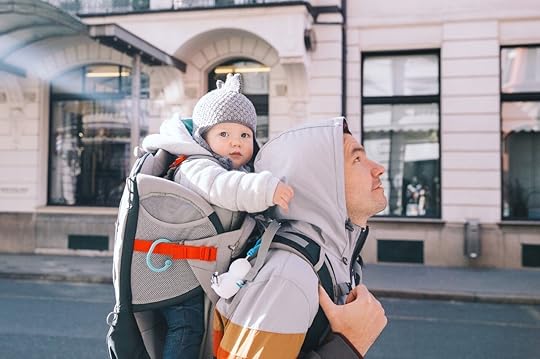
For those who love to travel, parenthood may feel like the end. The extra hassle, expense and disruption to routine make even the most passionate travelers think twice. But for parents fortunate enough to get parental leave, it’s a unique opportunity to celebrate their new arrival with a once-in-a-lifetime family trip. It’s often the longest break you can get from work, but is it ok to use it to travel with a baby? Is it safe to take your baby away, and is it too stressful?
Although the United States is one of the only developed countries without mandated parental leave, it’s a popular employee benefit. According to researchers at the Washington Center for Equitable Growth, over half of employers (55 percent) now offer paid maternity leave and 45 percent offer paid paternity leave. We spoke to three families who took advantage of this time away from the office to travel with their kids and despite the perceived challenges, here’s how they pulled it off.
Grab the chance to make memories with your new familyLee Turner Friedman, a working mom of two from Washington D.C, says: “Maternity leave isn’t a vacation, but it is a nice break from work. Getting out of the chaos of your own house gives you a really nice way to bond with your baby.”
Friedman, who works at a law firm, had five months of leave and used one week for a trip to the Caribbean with three other families who also had babies.

Photo: Lee Turner Friedman
“We bought these Integra baby carriers that were waterproof and we went to this beautiful beach in the Caribbean,” Lee remembers. “The baby was asleep on me, I had a cocktail in my hand and I felt like: I can do this!”
The memorable experience inspired Lee to launch her own travel business, Mango Tree Travel, to help other families plan trips together.
Babies are actually easier to travel with than older kidsYou might assume babies are hard to travel with, but in my experience, the opposite is true. Not only is it possible to take a baby on a long trip, but it’s also a lot of fun.

Photo: Karen Ni Eadbhard
Karen Ni Eadbhard, who works as a director in Abu Dhabi and runs the travel blog Travel Mad Mum, is a veteran of maternity leave travel, taking trips with all four of her babies.

Photo: Karen Ni Eadbhard
“With my first baby I definitely got scared to leave once the time came, but that trip was incredible for bonding and making special memories,” she says.
Eadbhard and her husband traveled around southeast Asia with their first child and drove the pan American highway from Canada to Argentina with their second. “This was the most incredible trip, passing through the entire West Coast of the US, all of Central America, Colombia, Ecuador, Peru, Bolivia and Argentina. This was the best trip ever!”
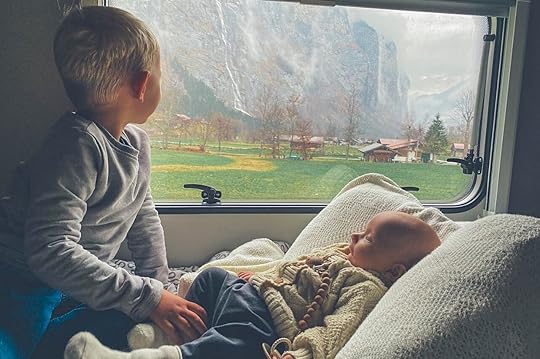
Photo: Karen Ni Eadbhard
Currently, Eadbhard and her family are enjoying another stint of maternity leave with her twins in Switzerland.
“First and second time I did this, I was much more daring and didn’t mind being around lots of people. However, the world has changed so much and this time, traveling in a campervan in the mountains, as much as possible away from groups, seemed right,” she says.
Once you’ve sorted out a passport, the cost of taking a baby with you is fairly minimal. If you fly with them as a lap baby, you’re usually only paying their taxes. Hotels will often offer a crib for free. And as they’re not mobile yet, there is less concern about them getting sick from touching grimy surfaces.
Traveling as a family opens up new experiencesCassandra Trzebski, who lives in Canada and owns the family travel blog Have Kids Still Traveling, also chose to spend part of her maternity leave away from home. Canadians can take up to a year away from their jobs, split between the parents.
They decided to use six weeks traveling together as a new family. Cassandra and her husband had Thailand in their sights “mostly for our love of Thai food,” she says, but decided to add Cambodia and Hong Kong to the itinerary too.

Photo: Cassandra Trzebski
Friends and family thought they were crazy for taking a child so young and questioned what a baby would get out of the trip. Trzebski says she did have some trepidation about traveling with a baby.
“One thing that kept popping up was that restaurants didn’t have high chairs, instead the waiters and waitresses would hold your baby for you while you ate,” says Trzebski. She was nervous about strangers wanting to hold her son.
But after arriving in Thailand and seeing how friendly the locals were, she relaxed.
“By the end of the trip, our son had visited the back of many kitchens and received lots of free food.”
The challenges of traveling with a babyThat’s not to say there aren’t challenges to traveling with a baby. “Packing was like a logic game,” says Friedman. “I definitely spent a lot of time on blogs figuring out how to take stuff with me.”
“The biggest challenge is packing up home and renting it,” says Eadbhard, who took the longest trip. “It’s like leaving a safe cocoon.”
While all these families took very different trips during their maternity leave, they all said the same thing: travel helped with the adjustment to their new roles as parents and brought more benefits than they expected.

Photo: Karen Ni Eadbhard
“There is something about being away from home, no dishes to do, no laundry, no work and no other household chores. All your time is spent bonding as a family,” Trzebski says.
“I think it allows for an incredible time as a family to be together and although the kids might not remember it, the adults do, and that’s OK,” Eadbhard adds.
I also discovered this on my own trip overseas when my son was born. I loved travel before he came along and was worried I would have to leave that part of my life behind once I became a mother.
But the trans-Atlantic trip to see friends and family when he was just four months was magical and helped me realize I would not have to give travel up at all. We’ve since taken our kids to all kinds of places and never felt like parenthood held us back.
Taking the plunge and traveling on parental leave is difficult, but the hardest part is making the decision to go. Once on the road, everything falls into place, and you can spend your parental leave doing exactly what it is designed for — bonding as a family and making amazing memories together.
Essential tips on travel with a baby1. Apply for a passport as soon as you have the birth certificatePassports can take up to 11 weeks to process, or up to seven weeks if you pay to have it expedited. Kids need both parents at the appointment. You can book your flight before you have the passport, just make sure you have enough time to receive it.
When flying with a child under two, you can add your infant as a lap baby. But it’s worth considering buying them their own seat so they can sit in their car seat for the flight. It’s safer, gives you a break, and you don’t have to check your car seat.
2. Research healthcare in the countries you’re visitingMake sure you take all medications you may require with you – your usual over-the-counter medications may not be available overseas. Find out how the country’s health system works and make sure you have an insurance policy that will cover your family. It’s a good idea to wait until your baby has had their first set of vaccinations to give them some protection from illness.
3. A baby carrier will be more useful than a strollerDon’t take too much stuff, only bring the absolute essentials on your travel. Strollers take up a lot of space and aren’t much good on cobblestones anyway.
4. Don’t over planBuild in plenty of time during your days for naps and time for relaxing together as a family. Make sure you have flexibility in your schedule for days when you just don’t feel like doing very much. It’s best to make your own itinerary, as tour groups usually move at a fast pace.
5. If taking an extended trip, pick somewhere with low living costsFor a longer trip, think about countries where your money will stretch further. You could also think about renting out your house while you’re gone to save some cash.
What to pack when traveling with a babyHere are a few of my favorite essential items, I won’t travel with a baby without.
We hope you love the products we recommend! Just so you know, Matador may collect a small commission from the links on this page if you decide to book a stay.
Portable booster chairThis booster chair is essential for dining comfortably in restaurants, or anywhere you need to put your baby down. It packs away easily into a bag, so you can bring it wherever you go.
Baby carrierA comfortable baby carrier should be top of every parent’s list. Pick one with wide, padded straps to spread the weight and a mesh outer layer to allow for good airflow.
Travel crib with a blackout shadeWhen your little roommate wants to go to bed at 7:00 PM, you don’t want to disturb their precious rest with too much light. Go for a travel crib with a black-out shade, and you won’t have to worry about waking the baby whenever you turn on the light.
Multi pocket diaper backpackDiaper bags are full of handy compartments to keep everything exactly where you need it, but don’t buy a shoulder bag — think of your back! Backpacks are more ergonomic, and you can stow everything you need for yourself and your baby.
Sleep sackI love these sleepsacks, and we took ours everywhere when our son was little. They’re cozy, easy to wash, and best of all, safe. 
7 backpacks for summer expeditions
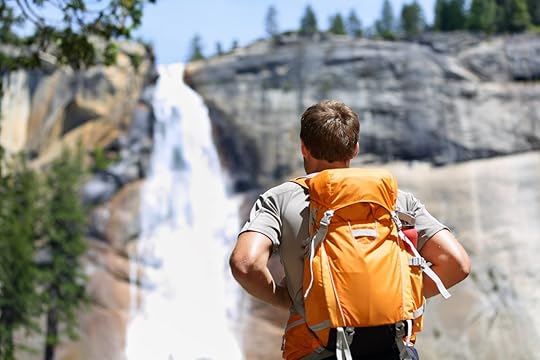
This summer’s wilderness trail explorations are bound to open up the world ahead of you. Enjoy star-filled nights or live that refreshing skinny-dip lifestyle at an alpine tarn. Let your mind recover and benefit from the break you’ve earned while you stare up at a massive rock wall or take in spectacular views while trekking up a mountain.
Finding the right way to haul your gear can make a big difference by reducing backaches and making you feel more lively when you arrive at your destination, allowing you to make the best of your outdoor time. Here are our recommendations for the best backpack for every type of outing this summer. Bonus because each of these packs is available through Amazon Prime, giving you free shipping and prompt delivery so that you can hit the trail this weekend.
We hope you love the backpacks we recommend! Just so you know, Matador may collect a small commission from the links on this page if you decide to book a stay. Listed prices are accurate as of the time of publication.
1. Easy walks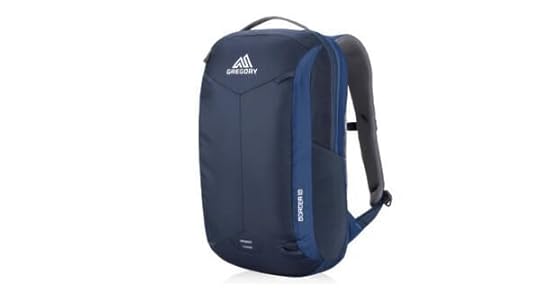
Photo: REI
The feel-good factor is high with the Gregory Border 18 Travel Pack, with a large main compartment and side pouches. The interior fits snacks, water, and basic supplies for a day out on the trail, exploring a city, or hanging out on the train. Now there’s no excuse to stick to scenic drives this summer.
Sleek, compact designStorage compartment compatibleLightweight2. Day hikes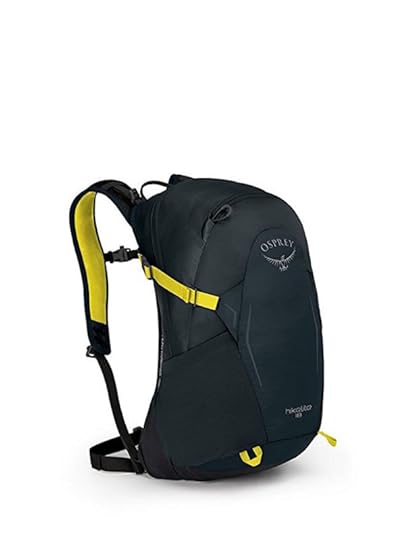
Photo: Osprey
On a day hike, all it takes is a couple hours of effort for a magical payoff. Osprey’s Hikelite 18 will take care of storing what you need for a one-day trip. There are no frills here, just features that matter, like a well-ventilated back panel, fitted shoulder harness, and quick-access side pockets. It fits a thirst-quenching hydration reservoir, with the added nice touch of a hiking-pole attachment strap system.
Easy access to everything insideComfortable and adjustable shoulder straps fit hikers of all sizesSleek, form-fitting design makes for easy movement3. Multi-night wilderness journeys – men’s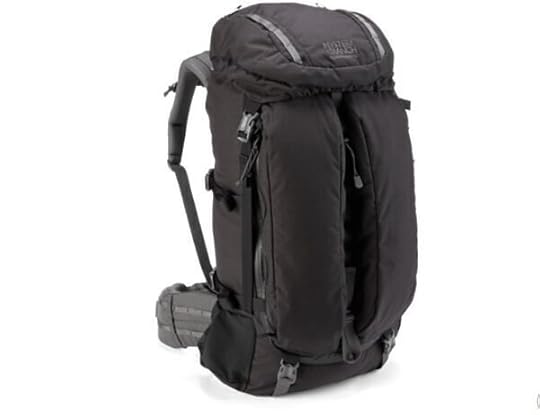
Photo: REI
If you’re embarking on a two-night journey, the Mystery Ranch Terraframe 65 blends key needs that backpackers will happy-dance over, thanks to its painstakingly good design, fit, and low weight. It’s a given considering the company’s pedigree that this pack entails high-quality materials and is built to withstand years on rocky trails.
External frame3L hydration reservoirEasy access to everything in the pack4. Multi-night wilderness journeys – women’s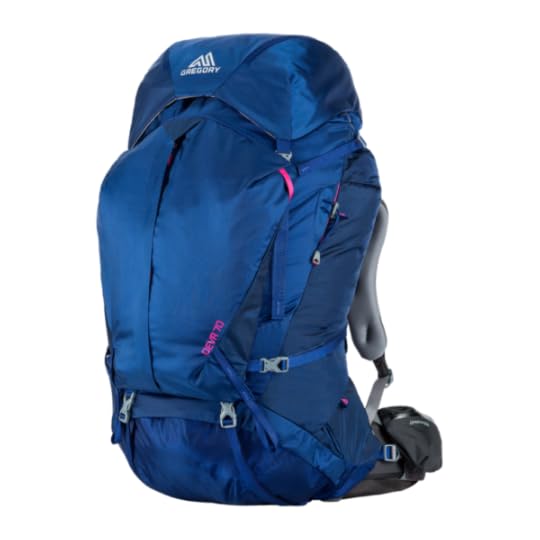
Photo: Gregory Mountain Products
When you’re heading out on a long trail, the Gregory Deva 70 delivers elements that count — not only the needed form fit but also a hip-belt and shoulder harness that are meant to handle heavy loads. This pack is a big bonus when you’re halfway down that wet, rut-filled mud track since the material dries quickly and reduces hot spots.
Internal frameRemovable daypackWomen-specific frame build and metrics5. Hot steps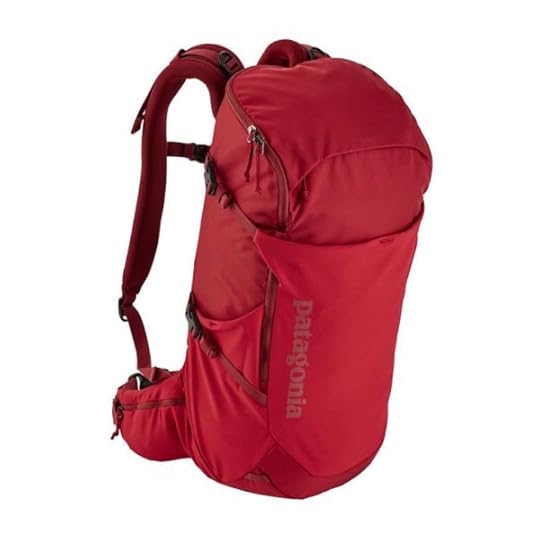
Photo: Patagonia
Lightweight yet able to take a sand-storm pelting, Patagonia’s Nine Trails Pack comes complete with a must-have sleeve to fit your hydration bladder and easy-access pockets for key items on ultra-hot treks, like sunscreen and energy bars. You’ll appreciate that mesh on your back, too. Amen for air flow.
Snug-fit and framelessPlenty of pockets28L size allows plenty of room6. River and ocean trips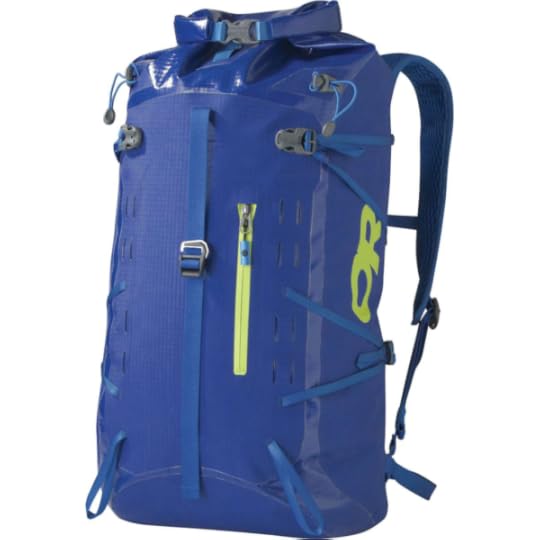
Photo: Outdoor Research
The Outdoor Research Dry Payload Pack has deluge-proof bomber construction, which is perfect for taking a beating on day hikes during multi-day river journeys, or walks into the gully-washer rainforest of British Columbia’s coastline. Don’t worry about your valuables getting soaked: this pack will keep your devices dry, so it’ll function just fine for capturing the moment a rainbow peaks through the storm clouds.
Guaranteed dry storageTextile liningLightweight, affordable, and long-lasting7. Trail runs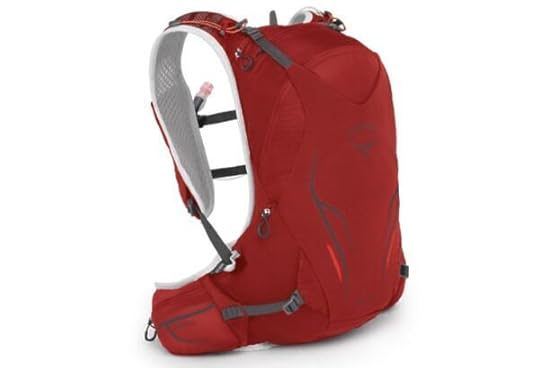
Photo: REI
Go ahead and hit your dirt-track stride this summer with the Osprey Duro 15 Hydration Pack is designed to carry what you need but not interfere with your step. With room for all the essentials, this pack has a form fit that prevents pack sway and provides ease of access to snacks when you’re about to collapse. 
Summer backpacking gear guide
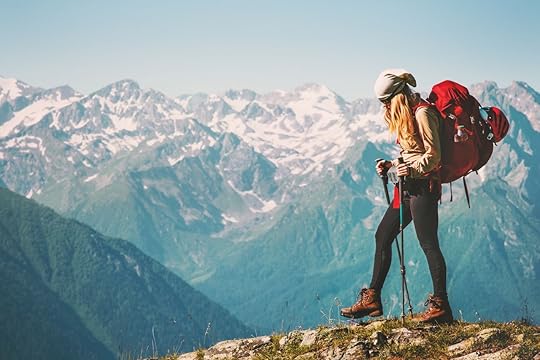
Admit it — you feel a serious spike in stoke level when you purchase a new piece of backpacking gear. It could be a small item, like a sleeping bag liner or a merino T-shirt, or a bigger one, like a tent or backpack, that could completely revolutionize your trekking experience. There’s just something so satisfying about building out your gear setup — and having the right stuff makes easier to plan and execute bigger and better trips. Trekking equipment is also an ideal gift for the outdoorsy people in your life. It can make the difference between a good outdoor experience and a bad, or downright risky, one. Here’s all the gear you need to ensure you’re properly prepared for the best summer backpacking trips this year.
Big-ticket itemsGeneral backpacking gearBackpacking clothes and small itemsWe hope you love the summer backpacking gear we recommend! Just so you know, Matador may collect a small commission from the links on this page if you decide to book a stay. Listed prices are accurate as of the time of publication.
Getting prepared for summerWhile trekking is the ultimate adventure during long summer days, optimizing the trip takes proper planning and the right gear. Being unprepared is the fastest way to ruin the journey for yourself and everyone in your group. You’re going to need additional gear than you would for a typical day hike, including multiple layers of clothing, camping supplies, and food. But if you’ve never gone backpacking before and agreed to join your buddies without knowing what you were getting into, never fear: we’ve compiled the ultimate gear guide for beginning trekkers.
When planning for your trip, take note of the fact that every trek is different in certain ways. On guided treks, the host company should offer a list of required materials, along with some additional comfort items or specialty gear they’d recommend. They may even offer rentals of certain items that are tough to take on a plane, such as trekking poles or crampons. On unguided hikes, it’s up to you to know what you need. This list will get you set up for success no matter where you’re heading this summer. Everything here can be purchased online or at a quality outdoor outfitter.
The basicsTrekking backpack
Photo: Osprey
Cost: $150-$300
If you’re spending at least one night in the woods, you need to have a worthy pack to carry your sleeping gear, food, and everything else that’s coming with you. Get a rugged pack that’s built for the backcountry, and at least 45 liters in size. For multi-day trips, a 55-70 liter pack such as the Osprey Atmos AG 65 will do you right. Make sure the pack includes a reservoir for a water bladder, such as a CamelBak (see below). If you do buy a pack online, we recommend buying it from a retailer with a physical location you can visit to have it properly adjusted to your body, such as REI.
Tent
Photo: Mountainsmith
Cost: $217-$279
If you’re camping on your trek and not staying in guest houses, a good tent with a rainfly is mandatory. A one or two-person tent is the best option, as it’s small for packing into your backpack and easy to set up. The REI Half-Dome 2 makes for a great trekking tent for solo trekkers or couples — or friends who don’t mind sharing a tent, as it’s spacious enough. It’s durable for rain, sleet, or wind, and won’t weigh down your pack too much since total weight is under four pounds.
For a family, we recommend a larger option, such as the Mountainsmith Upland 6. It’s designed for six but ideal for three to five people and their gear, in case it rains and you need to move stuff into the tent. Before heading out, double check to make sure you have the stakes and poles needed to set the tent up, and put them directly back into the storage bag each morning when breaking down camp.
Shop REI Half-Dome Tent
Shop Mountainsmith Upland

Photo: Western Mountaineering
Cost: $279-$299
Few things are more frustrating than not getting a decent night’s sleep when a big day of hiking is in front of you. A good sleeping bag makes all the difference. Step one when choosing one is to check the temperature rating, which is typically found both on any packaging that the bag is in at the store, as well as on the tag in the bag itself. Be sure you’re bringing a sleeping bag that is appropriate for the summer season and weather expected on the trip (remember that just because it’s 90 degrees during the day, doesn’t mean it won’t plummet to below 50 at night). We love the Big Agnes Sidewinder SL, available in men’s and women’s, for its comfort and easy packability, and because it meets each of the following recommendations:
A solid three-season bag will do the trick for most adventures, as long as the temperature rating is good to 20 degrees Fahrenheit.A sleeping bag liner can bring that temperature rating down to 0.Down insulation is the lightest and most efficient insulation on the market. If you have the choice between this and polyester, go with down.Splurge for a sleeping bag that’s waterproof. You don’t want to wake up in the middle of the night with a soaking wet back if it rains and water gets into the tent.Mummy, semi-rectangular, or rectangular? This is personal preference as much as anything else. Mummy bags are tight and warm, but don’t allow much wiggle room. Rectangular bags are more versatile for those who have a tough time sleeping in a still position. If you’re somewhere in between, a semi-rectangular shape is a happy medium.
Shop Big Agnes Men’s Bag
Shop Big Agnes Women’s Bag
A well-prepared trekker has researched the trip, read forums and comments, and taken note of what previous hikers have brought with them on the journey. In your research, you’ll likely find comments along the lines of, “I wish we’d brought this” or “I was so glad I had enough of that.” Look for patterns – when multiple people discuss the same item, it’s a pretty good sign that you should load it up. Here are some of our go-to specialty gear.
Jetboil Flash Cooking System
Photo: REI
Cost: $109.95
Jetboil’s burner connects easily to the small 3.5 oz fuel tank and allows you to heat food over an open flame in the middle of nowhere. It is guaranteed to work in temperatures down to 20 degrees Fahrenheit, allowing you to heat up a much-needed warm meal or a hot drink when camping even if it gets unexpectedly chilly.
Water purifier
Photo: REI
Cost: $25
Grab a Sawyer Mini Water Filter for your trek and enjoy drinking from freshwater streams. An actual filter system is beneficial as it purifies the water more thoroughly than simpler tools like filtration straws, which don’t do as good of a job at removing toxins and bacteria. That said, always take caution in drinking water from the source, and never drink still water.
Waterproof matches
Photo: REI
Cost: $10
For use in getting a fire going, among…other things. UCO’s Titan stormproof matches will come in handy more often than you’d expect.
Building your outdoor gear setup? Check out Matador’s guides to everything you need to thrive outside:The perfect backpack for every type of traveler, from hostelers to hikers10 must-haves for the traveling yogiWhat to pack for an epic trekking adventure in Latin AmericaAll the fall camping gear you need to have an epic tripAll the outdoor gear you need to keep moving on the trail this springBlack Diamond Headlamp

Photo: REI
Cost: $39.95
Illuminate the night with a headlamp from Black Diamond. If you’ve got a good book with you or just want to have a look at the trail map to route tomorrow’s hike, a headlamp is just as useful inside the tent as it is outside.
Hatchet
Photo: Hults Bruk
Cost: $139
An ax is a good thing to have any time you plan to spend the night in the woods. You’ll use it to cut firewood and bushwack your way through thick patches of overgrowth, and it also comes in handy as a self-defense mechanism. The Almike from Hults Bruk is the best option because it’s small enough to fit in your pack or strap onto the side, and it’s wooden-handled. The Swedish brand has been making axes since 1697. They’re the most durable axes you’ll find.
Compass and clinometer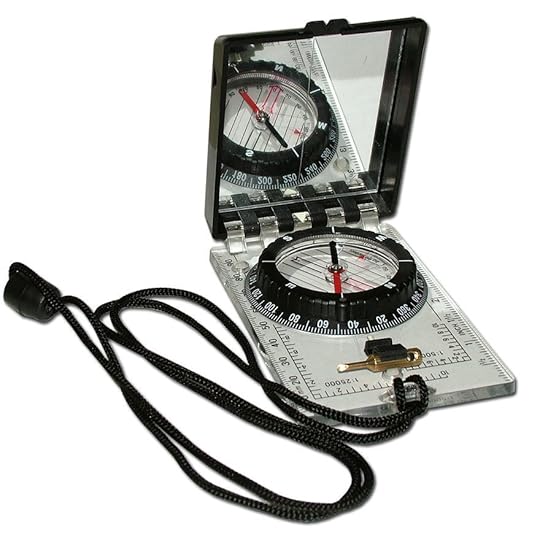
Photo: Amazon
Cost: $15.99
A reliable compass is a great hiking companion. This one from Advantage comes with a clinometer, used to measure the degree of slope, in case your crew gets into a heated discussion about how steep the forthcoming trail or summit push is.
Topographical map and trail map
Photo: Daxio Productions/Shutterstock
Cost: Varies
A topographical map shows altitude gain and loss along with detailed terrain features over a specific area. They can be tough to read at first, but once you get the hang of it you’ll never want to head into the mountains without a topo map again. A trail map of the area where you’re heading is also mandatory — don’t count on Google to save you.
Morakniv Companion heavy duty knife
Photo: REI
Cost: $64.95
It’s incredible how often a good knife comes in handy in the wilderness — everything from cooking to making a fire to quick repairs is made easier. If you’ve got a Swiss Army Knife, bring it. If not, this Gerber Principled Fix Blade Knife will do the trick.
First-aid and safety supplies
Photo: REI
Cost: $25
A small first aid kit is always worth making room in your pack for. Adventure Medical Kits comes with everything you’ll need to treat a minor inconvenience as well as a quick guide to tips and tricks for field use.
Hat, sunglasses, and sunscreen
Photo: Blazej Lyjak/Shutterstock
Cost: Varies
The air is thinner and the sun is closer at high altitudes. Always have sun protection on hand.
NEMO Switchback Sleeping Pad
Photo: REI
Cost: $39-$50
No one wants to sleep with a rock jabbing into their back. That’s where a NEMO Switchback sleeping pad comes in. When not in use, it rolls up and straps to the side of your pack. This portable “mattress” makes sleeping in the wilderness much more bearable.
Bivy sack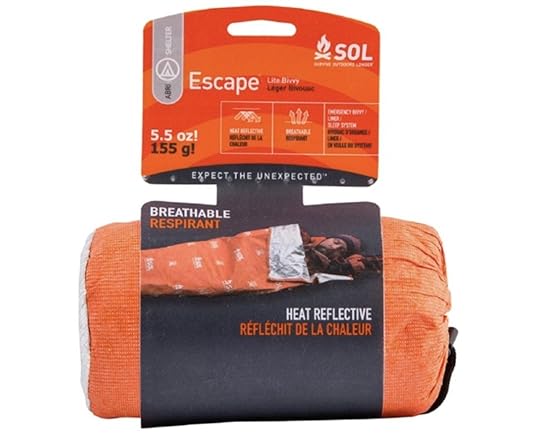
Photo: REI
Cost: $40-$179
A bivy is a lifesaver when a storm rolls in or something unexpected happens that leaves you stuck somewhere far from the campsite. It’s essentially a makeshift sleeping bag that retains heat and can keep you protected from the elements overnight. You can go fancy and opt for the tent-sleeping bag hybrid Helium Bivy from Outdoor Research, but if you already have a tent setup with you, a basic emergency bivy like the Escape Lite from Sol will do just fine.
Shop Helium Bivy
Shop Escape Lite Bivy

Photo: REI
Cost: $20 or less
Even if you aren’t a climber, always keep climbing rope in your pack in the backcountry. It could come in handy should you need to secure something from a tree at the campsite, tie something — think creating an emergency stint or evacuation sled — or even rappel yourself down a small rock face. Beyond emergency situations, having some rope around is never a bad idea anyway. No need to buy the super-expensive kind. Just head to the climbing section at REI and have a staff member cut you 10 feet of their bulk rope.
CamelBak water bladder
Photo: Camelbak
Cost: $20-$35
The easiest way to cart and drink water is with a CamelBak bladder. They fill easily from a faucet or from your water purifier and allow you to drink water as needed without having to stop and unzip your pack or reach around for a water bottle each time.
Handheld GPS
Photo: Garmin
Cost: $200
Without cellphone service, a handheld GPS unit like this one from Garmin is the best way to find yourself if you lose the trail or need any directional assistance. If on a guided trek, or with someone who has one, you don’t necessarily need your own. But if you plan to make trekking a regular activity, this is a good item to have on your list.
Trekking poles
Photo: Black Diamond Equipment
Cost: $99-$150
They look an awful lot like ski poles, but are compatible and can be strapped to the side of your pack when not in use. Trekking poles are the grown-ups version of a hiking stick and are useful in particular when heading down the mountain as they absorb some of the shock and pressure put on your knees with each step. Trekking poles are also great for balance at any point during the hike. Black Diamond offers a collection of great options ranging in price from $99 and up.
Edibles
Photo: Rawpixel.com/Shutterstock
Cost: Varies
No, we don’t mean the fun kind. Basics like granola bars and apples are cheap and easy to eat on the go. Bring them, of course, but protein and calorie boosts are essential on multi-day treks. Here are some ideas to get you started.
Peanut butter is an easy-to-pack protein that is cheap and fills you up. Plus, it’s high in calories — a must for trekking.Trail mix earned its name for a reason — it’s a great energy boost and easy to carry.Nuts. And more nuts. Protein. Calories. Protein. Calories.Patagonia Provisions campfire meals. Patagonia offers a range of easy-to-prep hot meals designed for cooking and consumption in the wilderness. They’re delicious, full of protein, and come in small packages which fit easily into your pack.Red beans and rice is a classic campfire meal. Quick, easy, and filling, this meal provides both protein and carbs to get you powered up for the next day.Tortillas are great for trekking because they travel much better than a loaf of bread. They can be packed compactly in your backpack — just don’t fold them.ClothesOuter layerWhen selecting your outer layers, think waterproof and wind resistance. Comfort is also a factor, particularly with boots.
Water-repellant shell layer jacket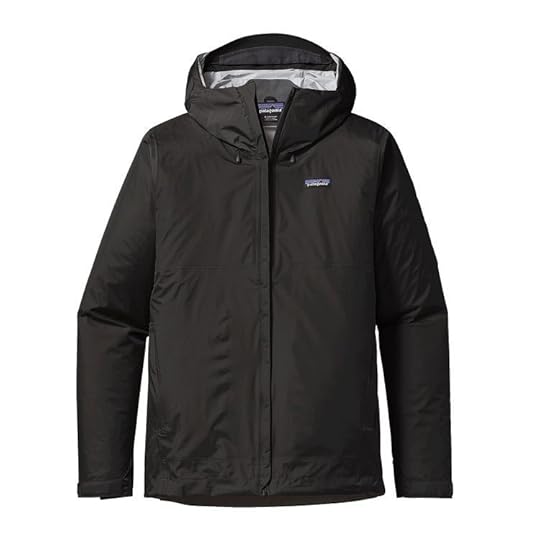
Photo: Patagonia
Cost: $100-$150
In the high country, weather can turn on a dime, turning a beautiful morning into a drizzly afternoon in what seems like an instant. You’ll be miserable (and soaking wet) if you’re hiking in a sweatshirt. Get yourself a water-repellant shell layer to throw on over your base layer. Patagonia’s Torrentshell is appropriate for most summer backcountry situations.
Shop Men’s Torrentshell
Shop Women’s Torrentshell
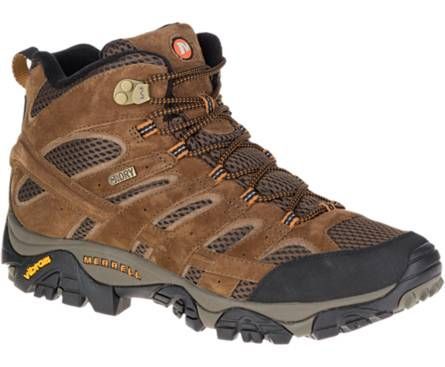
Photo: Merrell
Cost: $100-$150
This is probably the most important purchase to make in-store versus online. When buying hiking boots, look for two things: comfort and support (ankle coverage is a must). Read some reviews before making a purchase, because often the best hiking boots are super stiff when you try them on. Boots tend to get more comfortable as you break them in, and over time will conform to your feet. Merrell makes great trail boots. Invest in a quality pair and they’ll reward you with years of heavy use. If you’ve procrastinated and you don’t have time to break a sturdy pair in, opt for a lighter shoe with more flexibility.
Shop Men’s Merrell Boots
Shop Women’s Merrell Boots

Photo: Outdoor Research
Cost: $60-$130
Depending on altitude, season, and location, pants do you more good than shorts. This is in part due to protection from wind and water, and in part because long pants prevent scratches from branches and plants. You want something that won’t tear, is wind resistant, flexible, lightweight, and comfortable. The Cirque II Pants from Outdoor Research are a great option for men. PrAna makes a great pair for women, with options in multiple colors.
Shop Cirque II Pants
Shop PrAna Women’s Pants
When selecting base layers, think comfort, flexibility, and thickness. Base layer items are generally divided into three categories: lightweight, midweight, and heavyweight. Midweight is a general best practice for beginners and three-season trekking, particularly if you plan to head above treeline where wind can be quite ferocious. In general, the thicker the layer, the better it protects against cold.
Thermal underwear
Photo: Voyagerix/Shutterstock
Cost: $10-$50
Thermal underwear serves to wick moisture and sweat, and also provides added warmth for cold nights and inclement weather. The two most common materials are polyester and merino wool. Avoid silk underwear as it’s not odor resistant and doesn’t wick moisture as well as the other two. Lightweight options are good here as you’ll have other layers on top. REI offers options for both men and women.
Shop men’s thermal underwear
Shop women’s thermal underwear
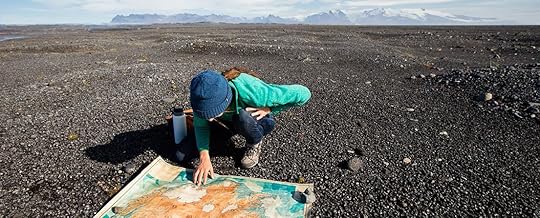
Photo: Patagonia
Cost: $30-$80
A thin, flexible merino wool top such as this one from SmartWool is perfect for wearing underneath your jacket and/or t-shirt. It will wick moisture, protect against wind, and is super flexible and comfortable. You’ll need at least two under layers to wear underneath your jacket shell if it gets cold, and a base layer top should be one of them. If your shell has an underlayer, this can be worn directly underneath it. A comfortable fleece, like this one from Patagonia, can work in between the two.
Shop men’s base layer
Shop women’s base layer
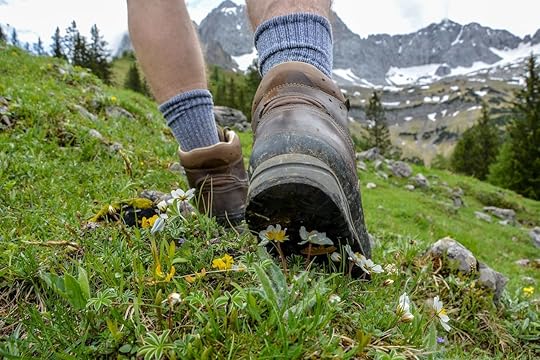
Photo: Asvolas/Shutterstock
Cost: $12-$20
SmartWool offers both men’s and women’s socks built with merino wool and designed specifically for trail use. There are plenty of other options, but keep in mind that you’ll be wearing hiking boots and need socks that rise up to near or slightly above the top of the boot to prevent rubbing.
Shop men’s socks
Shop women’s socks
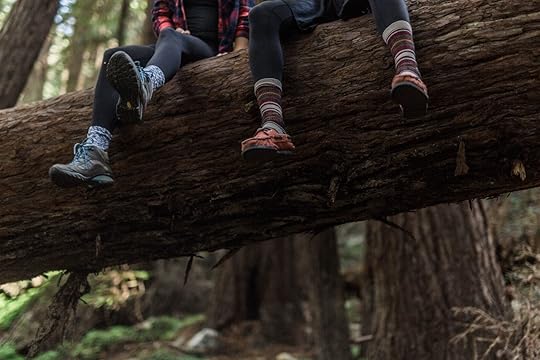
Photo: Nathan Dumlao
Cost: Varies
A pair of gym shorts or yoga pants will do the trick for relaxing post-hike and wearing to sleep. Taking off your hiking boots at the end of a long day is among the most satisfying experiences involved in backpacking, and the idea here is to have something comfortable to change into at the campsite or guest house. Also, make sure you have lightweight shoes to wear around the campsite so you don’t have to live in those heavy boots. A good pair of slippers — designed for outdoor use — will do. We love the REI Co-Op Camp Dreamer Slip-Ons. 
Cost: $59.95
More like thisHikingOur Editors Tested the Best Eco-Friendly Spring Hiking Gear — Here’s What’s Worth Your MoneyHike 61,638 Vertical Feet on This Road Trip To the Highest Peak in Each Western State

Sure, you could spend a few weekends doing overnight camping trips to check out some of the highest peaks in the US. Or, you could take this 4,446-mile, insanely epic road trip and cross off the highest peak in each of the continental American West’s 11 states.
With only 78 hours of driving, you could bag 11 summits, hiking 186 miles in the process. The full trip has an elevation gain of more than 60,000 feet of elevation, and passes close to some of the most stunning national parks in the West. With an aggressive schedule that includes doing as many of the peaks below in one day as possible, expect to spend at least 17 days hiking — and that’s if you do Mount Whitney in one day.
Of course, you can start anywhere, but we’d advise doing it in the early fall and starting in Denver, moving counter-clockwise. That’ll let you tick off most of the northern mountains in the sweet spot between last year’s snow being melted and next year’s snow blocking the trails, then swing down to the southern peaks a little later in the fall to (hopefully) beat the desert heat.
Summits like Mt. Whitney and Mt. Rainier can have snow on them year-round, so you’ll still want to make sure you have ice axes and traction devices in your hiking supplies.
Arizona: Humphrey’s Peak
Photo: SNEHIT PHOTO/Shutterstock

Photo: Jason Webber/Shutterstock

Photo: Nicole_N/Shutterstock
Distance: +/- 10.7 milesTotal elevation gain: +/- 3,395 feetMax elevation: 12,637 feetIn addition to being the highest peak in Arizona, Humphrey’s Peak is well-known for another selling point: on a clear day, you can see to the Grand Canyon from the top. The elevation gain should be fairly doable for most hikers, especially if you move slowly to account for the thinner air at higher elevations. It’s a popular trail and pretty well-marked, and while it gains a lot of elevation, the trail is mostly switchbacks, which makes the ascent a bit more gradual.
Humphrey’s Peak is one of the few high peaks in the west you can do year-round, though that doesn’t mean it’s without snow. However, even if it’s recently snowed, you can usually attempt this route if you have basic snow-travel experience (which means knowing how to use ice axes and the knowledge to evaluate avalanche conditions). You’ll also want a map since trail signs could be covered in snow.
If 10.7 miles isn’t enough for you, you may instead want to take the Weatherford Trail to the top. It’s just over 22 miles and popular with backpackers. More information.
California: Mt. Whitney
Photo: Sarah Fields Photography/Shutterstock

Photo: Charles Baden/Shutterstock
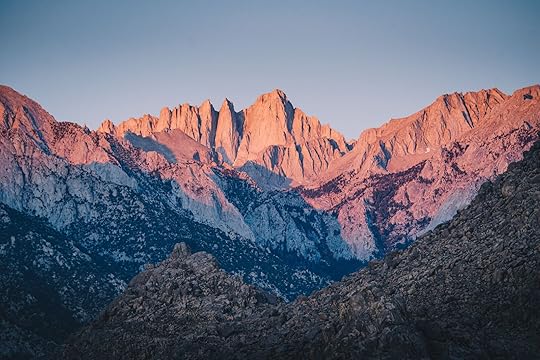
Photo: APurkisPhotography/Shutterstock
Distance: +/- 21 milesTotal elevation gain: +/- 6,650 feetMax elevation: 14,505 feetThere’s plenty to say about the challenge of Mount Whitney, not least of which that it’s normally at least an overnight hike, if not a two-night overnight hike. The trailhead’s elevation is already well over 8,000 feet, so attempting to gain another 6,600 feet in a single day –and make it back — is something only very experienced hikers should attempt. If you want to do it in two days, you’ll need to get an overnight Whitney permit, which allows you to camp at one of four designated areas along the classic Mount Whitney Trail. The most common way to do it is to hike to your campsite on day one. On day two, you wake up and start hiking before the light, which should get you to the summit around midday and allow you to get all the way back to your car (stopping to pack up your camp, of course) before nightfall.
One-day hikers still need a permit, though of course, it doesn’t include the ability to camp. The most popular time to summit Mount Whitney is in late summer and early September when there’s the lowest chance of snow and ice near the top, but those are always a possibility. You should carry and know how to use traction devices. Because of the massive elevation change between the summit and the nearest town (Lone Pine, at 3,727 feet above sea level), altitude sickness is a very real threat. Make sure you know how to identify the signs, regardless of how many nights you’re spending on the mountain. More information.
Colorado: Mount Elbert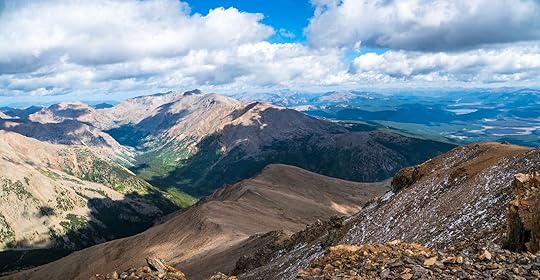
Photo: Roschetzky Photography/Shutterstock

Photo: nyker/Shutterstock
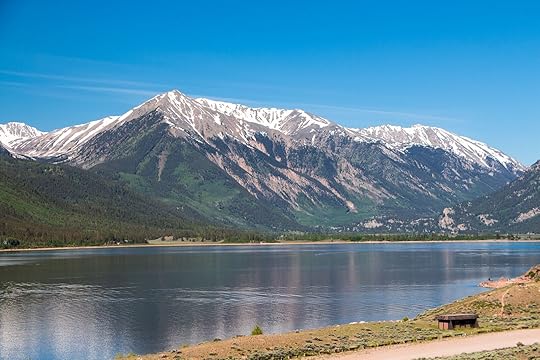
Photo: Tampa/Shutterstock
Distance: +/- 10.4 milesTotal elevation gain: +/- 4,468 feetMax elevation: 14,439 feetColorado is famous in the hiking community for its 14ers, and Mount Elbert is the highest in the state, making it also one of the highest peaks in the US. All 58 of Colorado’s 14ers are hard. but at under 5,000 feet of elevation gain and with no major hurdles, it’s one of the the state’s easier 14ers. (But, again: it’s still challenging. Don’t underestimate it).
It’s very doable in a day for fit hikers and doesn’t have any incredibly difficult features, save for the fact that much of the hike is above treeline and has no protection from wind and weather. You don’t need a permit, and you’ll want to get there early since it’s a popular trail. You’ll have great views of the Sawatch Range nearly the entire time and it’s well-marked, making it a good starting 14er if you’ve never hiked one before. More information.
Idaho: Borah Peak
Photo: Theodore Charles/Shutterstock
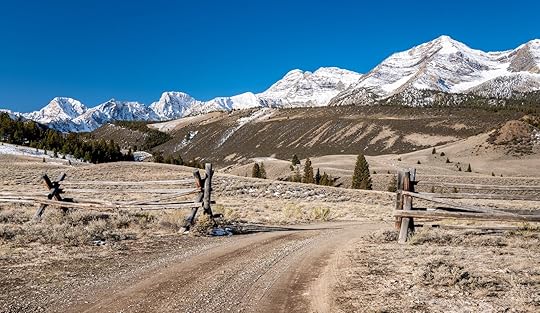
Photo: Charles Knowles/Shutterstock
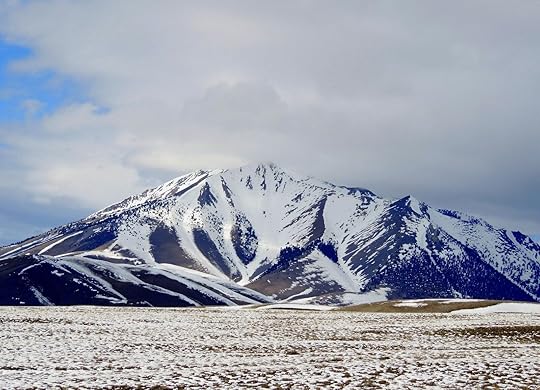
Photo: Debby Ford/Shutterstock
Distance: +/- 8.2 milesTotal elevation gain: +/- 5,301 feetMax elevation: 12,662 feetBorah Peak, also known as Mount Borah, may be one of the highest peaks in the US by state, but it’s one of the more mellow options on this list. An enthusiastic hiker in good physical shape could do it in a day. It’s still no joke, and there’s even a well-known stop on the route called “Chicken Out Ridge” where people often stop and take a break before attempting the next section: a scramble that requires use of your hands and feet to safely ascend. Then there’s an awkward little climb to the top top.
If you’re a hiker familiar with variable conditions, scrambling, and safely moving through snow patches (and you don’t mind gaining more than 1,000 feet per mile), it should be more or less in your wheelhouse. If you haven’t moved across a scramble before or think the per-mile gain is at the top of your physical limits, you can still try it. Just set a fixed turn-around time: a time at which point you’ll turn around regardless of where you are on the trail, to ensure you make it back down before dark. You can always come back and try it again, since you don’t need a permit (though there’s a $5 fee if you want to camp nearby). More information.
Montana: Granite Peak
Photo: Jason Maehl/Shutterstock
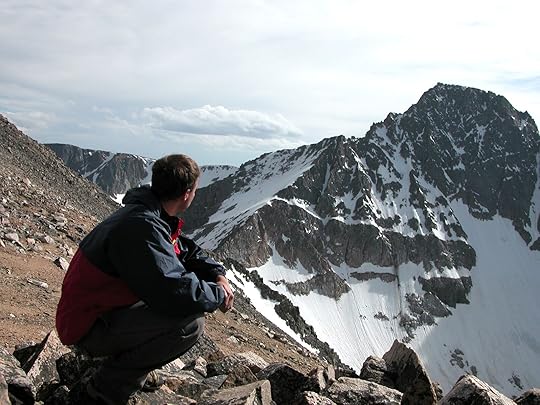
Photo: Jason Maehl/Shutterstock

Photo: Jason Maehl/Shutterstock
Distance: +/- 22.6 milesTotal elevation gain: +/- 7,614 feetMax elevation: 12,807 feetGranite Peak can be a hard two-day hike or a really hard one-day hike — your choice. If you do it as a one day, make sure you train in advance — while it’s not as high as Mount Whitney, it actually has more elevation gain, averaging close to 700 feet of elevation gain per mile for 11.3 miles. Even if you could do it as a one-day, the campsites along the route are stunning and worth adding an extra night if you’re a fan of sleeping under the stars.
Unfortunately, the hardest point of this hike comes right before the summit, when your legs are spent and you’re probably windblown and tired. Just before you reach the summit is the only spot with a significant downhill, losing about 800 feet of elevation in half a mile. From this low point, you’ll face a scramble to get to the summit, usually rated as a Class 3 or 4. Most people don’t use ropes, but you’ll need to use caution as there are large boulders and no guarantee that everything is stable. This is also where you’ll find the infamous “snow bridge” which can be slippery and/or thin. Use extreme caution.
If you decide to camp near the top, you’ll probably do so at the ominously named Frozen to Death Plateau, which is relatively close to the top (but subject to very strong winds). Camping on the FTD Plateau is not the time to phone it in on using your tent stakes. More information.
Nevada: Boundary Peak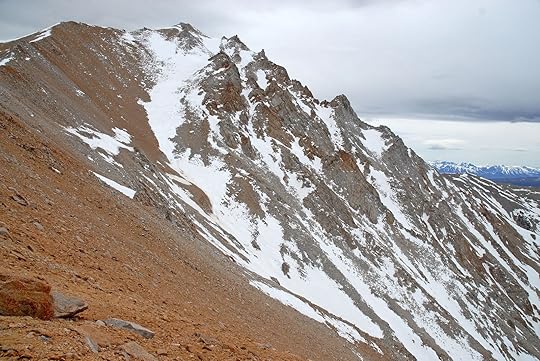
Photo: nyker/Shutterstock

Photo: Kris Wiktor/Shutterstock

Photo: Kris Wiktor/Shutterstock
Distance: +/- 7 milesTotal elevation gain: +/- 4,215 feetMax elevation: 13,140 feetWhen most people think of Nevada they probably think of Las Vegas, but there’s so much more to the state. The arguably prettier side of Lake Tahoe is in Nevada, and the state’s Great Basin National Park is one of the least-visited in the park system (and ideal for last-minute road trips).
However, Boundary Peak isn’t near the northern Nevada mountains — it’s actually just a mile or so from the California state line, very close to Mount Whitney and Lone Pine. So if your legs can handle it, you could hike the two back-to-back. The route is pretty by the book with a gradual gain. Don’t expect any shade and know that the trail can get very dry and dusty in the middle of summer. Most people start from the trailhead listed here, but you can also take the Queen Mine Trail to the summit. It has similar stats, but the road to reach the trailhead can be pretty rough and uneven unless you have a high-clearance SUV. More information.
New Mexico: Wheeler Peak
Photo: Raisa Nastukova/Shutterstock
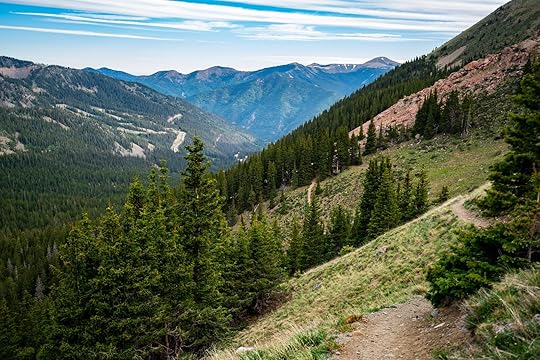
Photo: Roschetzky Photography/Shutterstock

Photo: Elijah Beck/Shutterstock
Distance: +/- 8.5 milesTotal elevation gain: +/- 2,972 milesMax elevation: 13,161 feetNew Mexico’s Wheeler Peak is probably the easiest of the highest peaks in the US western states to summit, but it still packs nearly 3,000 feet of elevation gain into just over four miles. There’s nothing particularly unusual about this hike, but you’ll want to take the standard precautions you do with any hard hike. Expect strong wind and changing weather once you get above treeline, and bring more food and water than you anticipate since the area can be very dry. Bring a traction device and be prepared to travel through snow near the top if you attempt it before June. Though even in June, there could be snow.
There are two routes on Wheeler Peak. The shortest and most popular with day hikers is Williams Lake, but Bull of the Woods is longer and better for overnight trips as it tends to be less busy. Without snow and with ideal weather, very experienced hikers should be able to make the trip in about four hours. There are bathrooms in the parking lot, and given Wheeler Peak’s proximity to Taos, you should be able to find a comfy place to kick up your feet at the end of the day. More information.
Oregon: Mt. Hood
Photo: Van Rossen/Shutterstock

Photo: jennagenio/Shutterstock

Photo: Gary Gilardi/Shutterstock
Distance: +/- 6.4 milesTotal elevation gain: +/- 5,249 feetMax elevation: 11,249 feetAt the surface, Mount Hood may look like one of the easiest peaks on this list — at least if you only go by the milage. It’s one of the highest peaks in the US’s western states, and you can drive relatively close to the top. In fact, the starting point of this trail is Timberline Lodge, a ski resort open usually 10 or 11 months out of the year.
From Timberline, the trail is more or less a straight shot to the summit of the “potentially active” volcano, with the elevation gain spread more or less evenly over the 3.2 mile climb. That said, the hike still averages more than 1,600 feet of elevation gain per mile, so just because it’s even doesn’t make it easy. And there’s a rocky, steep climb near the top than can often be icy and snowy. Use extreme caution.
When you’re back near the car, consider stopping for a drink or snack at the historic Timberline Lodge. The beautiful building was built in 1937, and if it looks familiar, it’s because it was a filming location for one of the biggest movies of the the 1980s: The Shining. It was used as the exterior of the “Overlook Hotel,” where — spoiler alert — things don’t turn out so well for the main character and his family. More information.
Utah: King’s Peak
Photo: Jeremy Christensen/Shutterstock
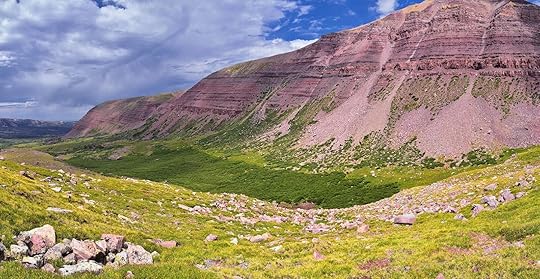
Photo: Jeremy Christensen/Shutterstock
Distance: +/- 27.8 milesTotal elevation gain: +/- 5,160Max elevation: 13,528 feetKing’s Peak is an excellent hike to do as an overnight or even a two-day trip — not just because it’s challenging, but because many of the backcountry campsites are near stunning alpine lakes. It’s a good backpacking route if you’ve backpacked and done challenging routes before, but haven’t backpacked a challenging route. The trail passes several lakes (i.e. water sources) and has a rathe steady gain with an average of around a four-percent incline.
That changes in the last four or so miles when the grade goes as high as 21 percent in some places on the push to the summit — but what did you expect from one of the highest peaks in the US? More information.
Washington: Mt. Rainier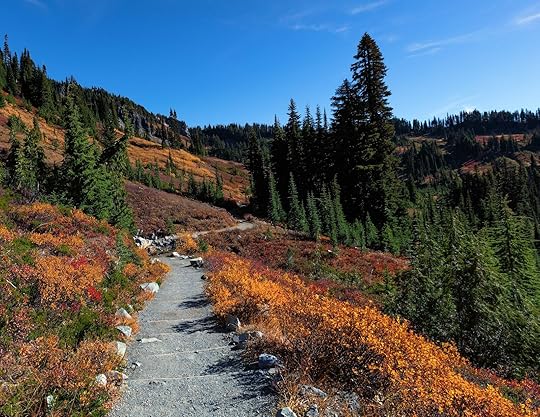
Photo: Mark A Lee/Shutterstock

Photo: BlueBarronPhoto/Shutterstock

Photo: BlueBarronPhoto/Shutterstock
Distance: +/- 14.7 milesTotal elevation gain: +/- 8,986 feetMax elevation: 14,411 feetGiven the right conditions — minimal snow and ice, dry trails, and warm, sunny weather — it’s possible to summit Mt. Rainier in one day. But nearly everyone does it in two or three since it includes technical elements beyond just hiking. Usually, some light mountaineering is required, which is probably why many people use a guide.
If you do it in one night, you’ll camp above the Ingraham Glacier or at Camp Muir; if you do it in two nights, you’ll camp at both. Swing two nights if you’re concerned about elevation and acclimation.
Mt. Rainier is not a hike you do on a whim. You’ll need to have experience with roping, traveling across ice, and using ice axes and traction devices. If you don’t have that experience, go with a guide. And even if you do have that experience, you’ll need to go with a guide unless you’ve managed to secure your own summit permit (which you can get at a ranger station) and a wilderness permit (which you have to do in advance online) if you’re planning to camp. You also need to pay a climbing fee, though it’s easy to do that in advance online. More information.
Wyoming: Gannett Peak
Photo: Jeff Bernhard/Shutterstock
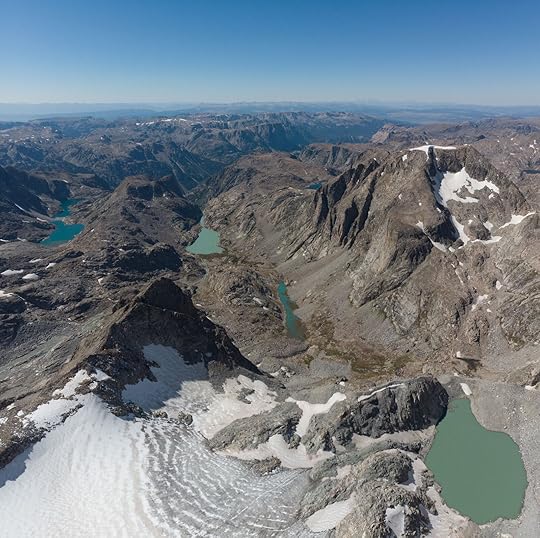
Photo: Jeff Bernhard/Shutterstock
Distance: +/- 48.8 milesTotal elevation gain: +/- 11,023 feetMax elevation: 13,804 feetMany of the highest peaks in the US’s western states can be done in a day if you’re ridiculously fit — but Gannett Peak is not one of them. At nearly 50 miles, you’re looking at a minimum of two nights. But given the trails’s challenges, including the uneven elevation distribution, and you’ll see why most people take three or four nights.
Take a look at the elevation profile, and you’ll see that its gradually uphill for the first 10 miles, then drops about 1,500 feet in 2.5 miles, then is relatively flat for the next eight miles, then climbs about 3,000 feet in the next two miles to reach the summit. It’s hard to pace yourself, and while the downhill after mile 10 may feel like a nice break, don’t forget that you’ll have to climb all that, and then some, the next day.
If you make it to the top, take note of the snowfield: it’s the Gannett Glacier, the largest glacier in the US Rocky Mountains. More information. 
April 22, 2022
The 9 Most Underrated Road Trips in the United States
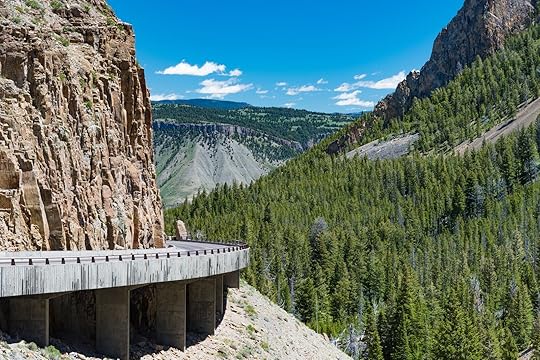
There are plenty of unforgettable road trips across the United States that you might have already taken or are dying to go on. The iconic Pacific Coast Highway will take you past California’s most iconic beaches up through Oregon and Washington. Or maybe you’re more interested in Route 66, which is almost a century old, that will take you from downtown Chicago all the way to the Santa Monica pier in California. But there are so many other road trips and scenic byways that capture the beauty of the US — some of which don’t get as much love as the more famous ones.
The consumer comparison site Confused.com conducted a study to find the most underrated road trips in the world. And the US has some of the most amazing natural beauty that you can find by car.
The nine most underrated road trips in the United StatesFoothills Parkway, TennesseeLamar Valley, MontanaTrail Ridge Road, ColoradoBearTooth Highway, Montana and WyomingSan Juan Skyway, ColoradoNeedles Highway, South DakotaColumbia River George, Oregon and WashingtonMohawk Trail, MassachusettsHurricane Ridge, WashingtonThese nine US routes offer perks that are too good to be missed. San Juan Skyway is often referred to as “the Switzerland of America” and the “Million Dollar Highway.” The 233-mile route will take you to limestone gorges, rocky switchbacks, waterfalls, abandoned mines from mining towns, and even a national park. Hurricane Ridge explores the Olympic Pennensula and Olympic National Park. If you’re interested in the best of Oregon, consider the historic Columbia River Highway, America’s first scenic byway that drives along the Columbia River with plenty of lush forests and waterfalls to explore. If you’re headed to the famed Yellowstone National Park this summer, Lamar Valley will grant you access early in the morning to see wildlife like wolves, bison, and elk. Montana’s Beartooth Scenic Highway is amazing all year long treking along the Rocky Mountains at 10,970 feet, another great way to get to Yellowstone National Park‘s Northeast Entrance.
To find the most popular road trips, Confused.com used Google search volume and then compared that to Tripadvisor reviews and annual Google searches. For each trip, the number of “excellent” and “very good” reviews each became a percentage of the total reviews for each road trip. The study cross-referenced that with the number of global Google searches made in the last 12 months. Each road trip received a score out of 10 for both its reviews and the number of searches. A trip scored higher if it had better reviews and lower searches.
With summer racing towards us now is the perfect time to figure out where you’d like to go for a ride. You should definitely consider a road less traveled. 
New Study Claims It Found the 20 Most Seductive Cities in the World

Sex is a part of human nature — and sex tourism is a booming multibillion-dollar industry. Whether you’re interested in strengthening your relationship with some intimate fun or exploring some of the world’s best sex clubs, having some flirty fun can broaden your horizons and be an experience you’ll never forget. So, where should you go if you’re looking for a sex-positive adventure? The Bottle Club, an online alcohol delivery service, gathered various data points to find the most seductive cities in the world.
The 20 most seductive cities in the worldLondon, UKLas Vegas, NevadaNew York, New YorkMadrid, SpainParis, FranceRome, ItalyBerlin, GermanyToronto, CanadaSydney, AustraliaLos Angeles, CaliforniaMiami, FloridaBarcelona, SpainVienna, AustriaAmsterdam, The NetherlandsMexico City, MexicoTokyo, JapanBrussels, BelgiumPorto, PortugalCape Town, South AfricaCopenhagen, DenmarkIn third place is New York, scoring 66.5 out of 100. New York scored third because of the number of people in the city employed on OnlyFans. It also found that the city has many kinky people and restaurants that sell the aphrodisiac oysters. It also had the Museum of Sex. The second sexiest city in the world is Las Vegas, which is well known for its strip clubs, sex events, and burlesque shows, earning the city a score of 67.6 out of 100. There are also plenty of porn stars that have used the city as inspiration for their stage names. But the city that proved itself as the most seductive by The Bottle Club’s measurements is London, with a score of 72.2 out of 100. If you’re looking for a fun time, London has plenty of sex events and kinky people to go with them. The city is also full of oyster and Champagne bars to make sure you’re in a flirty mood.
To find the 20 most seductive cities, The Bottle Club used a list of the top 30 major cities worldwide and used 10 different factors that make each city seductive, including the number of strip clubs, sex events, porn stars with a city’s name, one-hour hotels, number of people on OnlyFans, and restaurants that sell Champagne and oysters.
If you’re looking for a fun way to explore sexual experiences, maybe take a trip to one of these sexy cities — no need to feel ashamed for being curious or enjoying a healthy sex life. 
9 Edible Flowers and Plants You Can Find in Mexico and How To Prepare Them

In Mexican cuisine, plants play a central role: Some are known as quelite, or wild herbs, others are part of the natural landscape, like nopales, otherwise known as prickly pear cactus, and still others are poisonous and require careful preparations. Mexican plants, no matter the form they take, add texture and flavor to all kinds of dishes: enchiladas can incorporate deep magenta flowers and tortillas can be filled with melted cheese and squash blossoms.
Mexican plants are not just the realm of the home cook: They are found not just in markets and the pantries in the homes of Mexican people throughout the country, but at restaurants, too. And there are edible plants all over the country. These versatile delicacies grow from the Yucatan Peninsula to the states of Oaxaca and Puebla. No matter where you are in Mexico you will be able to experience not just the legendary meat dishes like carne asada and barbacoa, but the floral, pungent, and sweet plants that are served alongside them.
If you aren’t used to eating plants, you might be unsure where to start when it comes to diving into the diverse world of Mexican plants. This guide to the most widespread and beloved plants in Mexican cuisine outlines which Mexican plants to try, what region to try them in, and the dishes in which they most commonly appear. Here are nine plants you need to try on your next trip to Mexico.
Nopales
Photo: /Shutterstock
Let’s start with a true icon of Mexican culture. The nopal or prickly pear is easily found as a side or main dish all around Mexico, but especially in the central states around Mexico City. You can find fresh nopales in most traditional Mexican markets, either raw or as the famous ensalada de nopalitos. You can buy this refreshing salad by the kilo or prepare it yourself, just chop the nopales into small cubes and let them rest in a bowl with salt and water to take the slime away (this is mandatory for most recipes that include nopales), rinse and add chopped onion, tomato, panela cheese, coriander, and a pinch of oregano. Another easy alternative to prepare nopales is to grill them next to your favorite piece of meat which makes the perfect complement to any good taquiza.
Nopales are as versatile as veggies can be. They can be the base of a good stew, can be added to a vegetable soup, and even be the base of a healthy smoothie when combined with orange and celery. Nopales might be a little slimy, but they’re also very tasty.
Huauzontles
Photo: /Shutterstock
Huauzontle is an herb —very similar to amaranth— that would not impress anyone at first sight, but once prepared, everyone you know will be asking for the recipe. Huauzontles are eaten whole, including branches, leaves, and flowers and only the thickest branches are discarded. They are the perfect seasoning for many broths, but the most traditional way to prepare them is in tortitas, a dish battered with eggs, stuffed with cheese, and covered in pasilla chili sauce.
Huauzontles and other herbs (hierba santa, acuyo, watercress, romeritos, and pápalo) are classified as quelites in Mexican gastronomy. This means that they are wild herbs which grow alongside other crops, especially in the milpa (the agrosystem Mexican farmers use to grow their corn). The use of quelites is a concept that comes from pre-Hispanic Mexico and focuses on the food that nature provides us on its own.
TetechasThe cacti forests at the border between the states of Oaxaca and Puebla are a sight to behold. The columnar cacti in the area produce large fragrant white flowers on which bats and other animals feast at night; these same flowers are also one of the most recognized gastronomic elements of the region of Zapotitlán Salinas. Tetechas are the immature flowers of this columnar cacti. They are delicious, nutritious, and versatile.
Tetechas are so important in the regional gastronomy that locals celebrate their arrival with gastronomic festivals and other events where visitors are invited to share a sample of these delicacies. To try tetechas in their true glory you should visit the town of Zapotitlán Salinas, Puebla, between the months of April and June. Among the restaurants that offer dishes based on these flowers, Itandehui is the ideal place to experience gourmet cuisine based on local ingredients. While you’re here, take a tour of the Helia Bravo Hollis Botanical Garden and enjoy a guided hike of the unique Mexican desert landscape.
Jamaica
Photo: /Shutterstock
Dried hibiscus flowers are present in most Mexican households. However, very few people take advantage of this flower beyond the preparation of traditional aguas frescas. Hibiscus has been incorporated into modern Mexican cuisine in a great variety of dishes, from sauces to desserts. One of the most striking recipes, both for its simplicity and for being a variant of one of the most common dishes throughout Mexico, are the famous enchiladas de jamaica. Just follow the recipe for your favorite plate of enchiladas, but substitute the usual chicken or cheese filling with jamaica. Remember that jamaica must be simmered before adding it to any other dish.
Colorines
Photo: /Shutterstock
Colorines or gasparitos are seasonal flowers that mark the beginning of the spring in the central states of Mexico. They’re also a delicious ingredient that appears in several specialties in the states of Morelos, Veracruz, and Estado de México. Its strong savory flavor —similar to that of meat— makes colorines a central element of any dish they’re a part of. They can be found in street markets (especially in small towns like Tepoztlán) in the months of March and April. They’re very cheap, but most people won’t buy them because cleaning and preparing them can be quite a chore (consider that some parts of the same plant are poisonous, so you’ll really want to stick to the flowers only).
Squash blossoms
Photo: /Shutterstock
There is no self-respecting quesadilla stand that does not include the typical quesadilla de flor in its repertoire. Here, the flor is a reference to squash blossoms or pumpkin flowers. Typically, this is a yellow flower that you can find in bunches in any vegetable stand of your nearest market. They are cheap and can be used in either salads, soups, sauces, and dressings. But the most common and delicious way to try these are inside a fresh, steamy, cheese-dripping quesadilla.
ChayaThis little plant is very famous in the Yucatan Peninsula. Like the huauzontle, chaya is also a quelite – a wild herb – and is toxic, so it should always be boiled before consumption and never be cooked in aluminum kitchenware. Once the chaya is boiled, you can do whatever you please with it: Add it juices, smoothies, tamales, salads, soups, or even stews, for instance.
Dishes prepared with chaya are available in restaurants all around Southwest Mexico. But if you’re in Mérida and craving some authentic regional food, do yourself a favor and pay a visit to La Chaya Maya.
AcitrónAcitrón is a typical Mexican candy that is extracted from the biznaga, a species of cacti that grows in the central areas of Mexico. The pulp of the biznaga can be crystallized with sugar, leaving a yellow colored sweet that is easy to find in markets around Mexico. This product has been traditionally used to embellish the Rosca de Reyes (a family-sized bread consumed for Kings Day) and is a fundamental element of one of Mexico’s most traditional dishes, chiles en nogada. Acitrón has a dark side though. The exploitation of the biznaga to produce acitrón has caused the populations of cacti to decline and biznagas are currently a species under special protection.
Huitlacoche
Photo: /Shutterstock
This last one is not a plant nor a flower, but a corn fungus. Anyone who has seen a corn cob infected with huitlacoche might think that it is better to throw it away, but that is not what the ancient indigenious Mexican peoples did – in fact, it was part of their diet. Huitlacoche is not the prettiest among edible mushrooms, with a characteristic black color that might deter most of those who encounter it. However, once you know how to combine it with epazote, garlic, and stuff it inside a tortilla, you will never be able to forget it. Huitlacoche is a seasonal delicacy and you’ll be able to find it fresh in every Mexican market and on the menu of every quesadillas stall once the rainy season starts. It’s not cheap, but it’s definitely worth a try. 
30+ road trip essentials
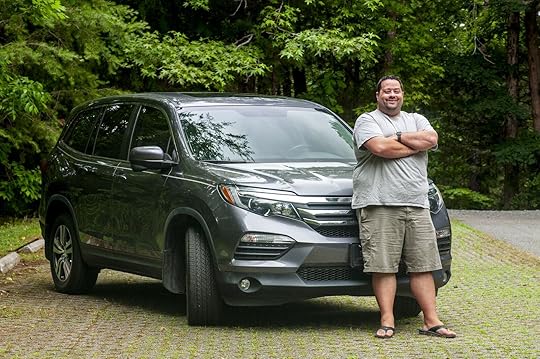
Rather than taking the fast lane to a destination, road trips are about taking the scenic route — and spending hours upon hours in the car. That means that your typical vacation packing list will need a few tweaks to incorporate all the road trip essentials — beyond your driver’s license and car owner’s manual, that is.
I spend between eight and nine months of the year on the road, touring the United States. I consider myself a professional road tripper, and as such, I know a thing or two about what you need to pack for a long ride. The following list of over 30 road trip essentials is the product of years of trial and error. I never travel without any of these items, and if I ever happen to hit the road without one, I find that I miss it, need it, and buy it somewhere along the way.
We hope you love the products we recommend! Just so you know, Matador may collect a small commission from the links on this page if you decide to make a purchase.
Road trip essentials: Things that should always be in your carRoad trip essentials: What to always keep in your trunkRoad trip essentials: Maps and navigation toolsRoad trip essentials: For staying comfortable on the roadRoad trip essentials: For safety and securityRoad trip essentials: For packing food and drinksRoad trip essentials: How to stay entertainedRoad trip essentials: Things that should always be in your carAnker PowerDrive Car ChargerKeeping electronics like smartphones, tablets, and Bluetooth headphones charged can be challenging on a road trip. The Anker PowerDrive Car Charger plugs into a 12V power outlet and provides power to a USB-A and USB-C port for charging multiple devices simultaneously.
iOttie Wireless Car ChargerTwenty-four states and the District of Columbia have banned the use of handheld cell phones while driving. But if you’re using a smartphone for navigation, music, or hands-free phone calls, you need to keep it within view and accessible. The iOttie Phone Mount features a spring-loaded clamp to securely hold a smartphone, and mounts to the windshield or dashboard. Plug the cable into a 12V power outlet, and the iOttie Phone Mount also provides power to Qi-enabled smartphones.
EPAuto Car Trash CanPlastic grocery bags and paper fast food bags work as a trash can in a crunch, but the EPAuto Car Trash Can is the best option. Using an adjustable Velcro strap, you can securely hang the soft-sided trash can from the car’s headrest, handlebar, or center console. A small opening in the top makes it easy to chuck the garbage, and the top panel opens to dump the trash at a gas station quickly.
PURGGO Natural Car Air FreshenerThe PURGGO Natural Car Air Freshener is an all-natural alternative to air fresheners. The soft-sided bag uses activated bamboo charcoal for a fragrance-free odor eliminator in the car. The eco-friendly air purifier lasts up to a year with a single use, and with the straps, you can hang it just about anywhere inside the car.
EcoNour Car Sunshade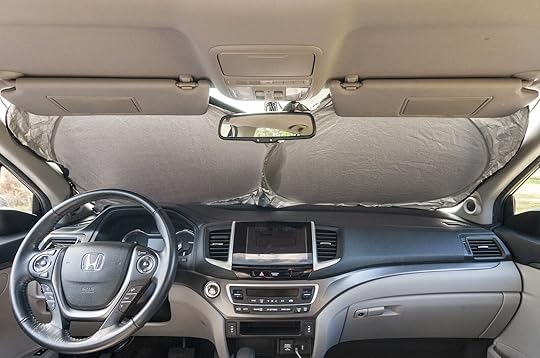
EcoNour SunShade covers the entire windshield. Photo: Jason Barnette.
Did you know that the ambient heat combined with the sun’s light can raise the temperature of a dashboard to 192 degrees? That’s hot enough to cook a hamburger. Sunshades can reduce the air temperature inside a parked car by up to 40 degrees. Unlike the accordion-style sunshades, the EcoNour Car Sunshade uses two collapsible circular discs connected with loose-fitting material covering 100 percent of any car’s windshield.
Rexing V1P Dash Cam
Photo: Jason Barnette.
The most stressful part about driving is watching out for the other drivers on the road. When the worst happens, and someone wants to blame you for a car accident, the Rexing V1P Dash Cam can be helpful. The camera plugs into a 12V power outlet and automatically records video to an SD card whenever the car’s engine is running. The front-facing camera records 2160p high-resolution video, while the rear-facing camera records in 1080p. With a Bluetooth connection to a smartphone app, users can quickly download video footage whenever needed.
Road trip essentials: What to always keep in your trunkSurviveware First Aid KitWhen bumps, scraps, and cuts leave you searching for antiseptic and gauze, the Surviveware First Aid Kit will come in handy. The premium first aid kit has labeled compartments to easily find bandages, cleaning wipes, and gloves. The 600D polyester bag is water-resistant, and buckle straps make it easy to hang the bag anywhere inside the car.
Kolo Sports Roadside Emergency KitAAA is always just a phone call away, but sometimes all you need is a jump start or a loose cable tied down. The 156-piece Kolo Sports Roadside Emergency Kit has everything you need for minor roadside repairs on a road trip. The durable bag is stuffed with hand tools, jumper cables, and accessories that will get you back on the road pronto.
THISWORX Car VacuumThe difference between a spill in the car being a minor ordeal and a nightmare hassle is how long it takes to clean it up. Rather than wait for the next gas station with a well-worn vacuum, it would be easier to get the THISWORX Car Vacuum out of the trunk. The 12V car vac includes a long power cord to reach any part of the car and several attachments for getting into all the nooks and crannies. The bagless design is easy to clean later, and the travel bag keeps everything organized in your car.
BESTEK 12V Power InverterNot everything that requires power can be plugged into a USB port or 12V power outlet. For those instances, the BESTEK 12V Power Inverter can solve the problem. The inverter plugs into a 12V power outlet and provides two 110V power outlets, just like those at home. With 300W of power output, the inverter can charge portable electronics and power small appliances.
Road trip essentials: Maps and navigation toolsGarmin DriveSmart 86 GPS NavigationHave you ever tried using Google Maps or Waze for navigation when you have no cellular signal? A serious road trip requires serious navigation. The base model Garmin Drive 52 features pre-installed maps of North America with millions of points of interest, so you never have to worry about losing data signal. But without voice activation, you’ll have to enter your destination on the 5” touchscreen manually.
The Garmin DriveSmart 65 is a nice upgrade that includes voice activation and a 6.95” high-resolution touchscreen. The DriveSmart connects with smartphones via Bluetooth to provide live traffic updates and helps you avoid accidents and closures with automatic rerouting.
Rand McNally Road AtlasNifty automotive GPS devices and smartphone apps are nice for navigation, but nothing beats the good old-fashioned road atlas. The Rand McNally Road Atlas is more than just a collection of maps – the 132-page book is packed with maps, information and tips, and full-color photos. The National Park Guide includes details like hiking trails, lodges, and scenic drives in the most popular national parks.
Road trip essentials: For staying comfortable on the roadSea to Summit Aeros Neck PillowLong hours spent in the car will inevitably lead to a nap — for everyone but the driver. When your eyelids feel heavy, that might be the best time to inflate the Sea to Summit Aeros Neck Pillow. The ergonomic design hugs your neck and supports your head, while the polyester knit material is soft and cozy, leading to hours of comfortable sleeping in the car.
Klymit Versa BlanketSomeone is always too hot or cold when piled into the car on a road trip. If you’re too hot, open a window. But if you’re too cold, pull out the Klymit Versa Blanket. The polyester blanket feels soft, and the synthetic insulation will keep you warm. Use the built-in foot pocket to keep your feet toasty on the road.
Road trip essentials: For safety and securitySPOT Gen 4 Satellite MessengerAccidents happen while on the trail and driving down the road, and help is not a phone call away if you have no cellular service. The SPOT Gen 4 Satellite Messenger is a pocket-sized device that communicates via satellites covering all of North America. Simply press the S.O.S. button, and SPOT automatically alerts the nearest authorities and dispatches rescue.
Apple AirTags
Photo: Jason Barnette
Apple AirTags are Bluetooth-enabled trackers helpful in keeping your possessions safe while traveling. The trackers silently connect to Apple’s Find My Network, allowing users to track their devices using the app built into iOS, iPadOS, and macOS. Drop an AirTag into your purse or wallet, attach one to your luggage, or hide one inside your car for peace of mind while road tripping.
Road trip essentials: For packing food and drinksFront Runner Wolf Pack ProThe Front Runner Wolf Pack Pro is a favorite among overlanders – people who road trip with no roads. The durable plastic totes are water and dustproof, stackable, and feature straight sides for maximum storage space. The storage boxes are perfect for taking food on the road with an easily removable lid.
YETI Rambler 30oz Tumbler
YETI Rambler 30oz Tumbler. Photo: Jason Barnette.
Did you know fountain drinks are significantly cheaper per ounce than bottled sodas? Filling up the YETI Rambler 30oz Tumbler saves you money on a road trip and reduces plastic waste. With the additional YETI Replacement Lid and Straw, you’ll be set to enjoy ice-cold sodas on your road trip.
CamelBak Chute MagThe biggest challenge with most reusable water bottles on a road trip is keeping the straw clean. Fortunately, the CamelBak Chute Mag doesn’t use a straw. Instead, the cap unscrews and magnetically catches to the side of the lid, allowing you to guzzle the contents as quickly as you want.
DEVICO Travel UtensilsHave you ever taken leftovers back to your hotel, snuggled into your comfortable room, only to realize you don’t have a fork or spoon? The DEVICO Travel Utensils are an excellent way to ditch single-use plastic utensils. The set of stainless-steel flatware includes a fork, spoon, knife, chopsticks, straight straw, bent straw, and a straw cleaner in a convenient zippered case.
BAGGU Reusable Shopping BagWhether shopping for groceries or just heading into a gas station for road trip snacks, the BAGGU Reusable Shopping Bag can help reduce waste. The small bag measures 10”x18”, about the size of a typical grocery store bag, but you could buy the standard and large size for more capacity. The ripstop nylon is durable and capable of toting up to thirty pounds.
YETI Hopper Flip 12 CoolerYETI made splashes in 2006 with their Tundra series insulated coolers capable of keeping ice frozen for up to a week. The Hopper series debuted later, featuring a leak-proof zipper, puncture resistant DryHide Shell, and carrying strap. The YETI Hopper 12 can hold up to twelve cans with moderate ice, and the Hopper 18 can hold up to eighteen cans, each capable of keeping the contents cold for days.
BODEGA 12V Car RefrigeratorThe downside to road tripping with a cooler – even the super insulated YETI Hopper – is the constant need for ice. Bypass the need for bags of ice altogether with the BODEGA 12V Car Refrigerator. The portable fridge plugs into a 12V power outlet and can be set for a temperature ranging from 4-degrees to 68-degrees. Available in 18L (4.7 GL) and 25L (6.6 GL) sizes, even their smallest fridge can hold 32 cans – or nine bottles of wine!
Road trip essentials: How to stay entertainedSony WH-1000XM4 Noise Canceling HeadphonesNot everyone enjoys hours in the car listening to the same playlist. If you’re not the driver and want to listen to something else, the Sony Noise Canceling Headphones will help keep your music to yourself. The over-the-ear design will block out the noise around you, enveloping you in a world of your own playlist, or silence, for up to 30 hours on a single charge.
Moment Lenses for SmartphonesSmartphones are the most popular type of camera in the world today. Although the major brands have started adding two, three, or more lenses into the phones, you’ll get the best results with a set of Moment Lenses. The Seattle-based company produces a lineup of high-quality lenses that screw into cases custom-fit for almost every type of smartphone. Choose a wide-angle, telephoto, macro, and fisheye lens to up your photography game on your next road trip. Just don’t try to take photos while driving, that’s very unsafe and likely illegal.
Field Notes Memo BooksChicago-based Field Notes produces notebooks inspired by old-fashioned memo books distributed to farmers in the 1950s and 60s. The pocket-sized memo books are perfect for jotting down travel tips from your waiter or the name of an attraction on a billboard. The brand started with the Original Kraft Memo Books — a 48-page book with ruled paper. You can also pick up a three-pack of their National Park Series featuring unique artwork of eighteen parks. And with this leather journal cover, you’ll be able to keep the memo book safe and sound while traveling.
GoPro Hero10Since debuting in 2002, GoPro has set the standard for pocket-sized action cameras. Their latest model, the GoPro Hero10, is the most feature-packed camera yet. Record 5.3K high-resolution video up to 60 frames per second and capture still images at 23MP. The built-in HyperSmooth 4.0 eliminates distracting camera shake, producing a smooth video of your travel adventures. Rugged and waterproof up to 33 feet, the action camera is ready to use right out of the box. 
The Best Memphis Airbnbs To Experience the City’s Music, Culture, and Cuisine

The city of Memphis, where the lights shine all the time, is commonly known as the “Home of the Blues & Birthplace of Rock ‘n’ Roll.” Memphis is a city inspired by music, as legends Elvis Presley, B.B. King, and Johnny Cash recorded hits here. Whether you’re here for the music, the history and culture, family fun, or other attractions, dive into an awesome stay at the best Airbnb Memphis rentals.
We hope you love the Airbnb Memphis stays we recommend! Just so you know, Matador may collect a small commission from the links on this page if you decide to book a stay. Listed prices are accurate as of the time of publication.
Frances Grace House
Photo: Airbnb

Photo: Airbnb

Photo: Airbnb

Photo: Airbnb
Check out this other historic home located right next to the William Henry House in Victorian Village. The two-story home features a spacious living room and kitchen with a patio on the second floor. The house is near many popular attractions like the Big River Crossing, Music Hall of Fame, Memphis Rock n’ Soul Museum, and more.
Eight guests, four bedrooms
Price: $500 per night

Photo: Airbnb
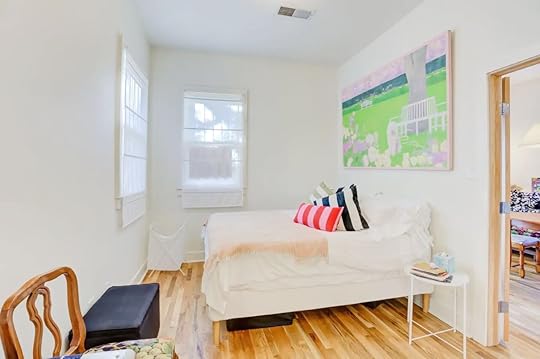
Photo: Airbnb

Photo: Airbnb
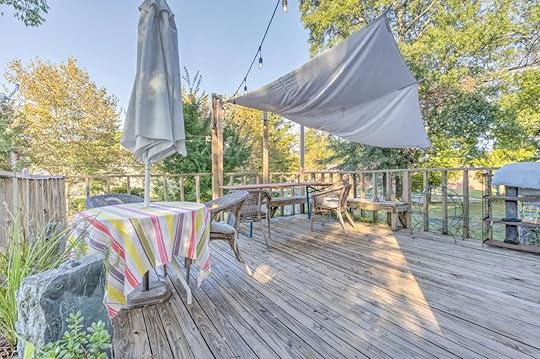
Photo: Airbnb
Rock out with this creative space in Memphis. This home has one bedroom and a second living large space with a king bed, sofa, and a day bed. This extra living space can act as a second room or living room area. There is a full kitchen stocked with everything you need, and there is local art throughout the home and some musical instruments.
Five guests, two bedrooms
Price: $101 per night

Photo: Airbnb

Photo: Airbnb

Photo: Airbnb

Photo: Airbnb
Come and stay at this newly built Memphis home. This spacious floor plan has a living room and kitchen featuring floor-to-ceiling windows. A private courtyard is perfect for relaxing after a long day of exploring. The centrally located home is near downtown Beale Street, FedEx Forum, Convention Center, The Medical Center, and the Civil Rights Museum.
Six guests, three bedrooms
Price: $425 per night
Traveling to Tennessee? Check out Matador’s top Tennessee accommodation guides:Gorgeous Tennessee Airbnbs across the state for your next southern roadtripThe best Airbnbs in Nashville for a bachelorette getawayThe 11 best Nashville Airbnbs by neighborhoodVibrant Downtown Memphis townhouse near nightlife and entertainment

Photo: Airbnb

Photo: Airbnb

Photo: Airbnb

Photo: Airbnb
Are you looking for the perfect place for a friends’ getaway? Check out this spacious Airbnb Memphis retreat in a prime location. This spacious townhouse is a four-bedroom, six-bath townhouse with common areas like the living room, kitchen, and dining room located on the same floor. There is also a rooftop with a fire pit and outside seating area to hang out after a long day. The townhouse is located right in the heart of downtown and is minutes from nightlife, entertainment, and other Memphis attractions.
Sixteen guests, four bedrooms
Price: $675 per night

Photo: Airbnb

Photo: Airbnb

Photo: Airbnb
Here is the perfect Airbnb Memphis property that would be great for couples or a solo trip. This historic renovated property is located right in the heart of downtown Memphis. This apartment has a full kitchen and living room. It’s also situated above a restaurant and within walking distance of all the popular downtown Memphis attractions.
Two guests, one bedroom
Price: $130 per night

Photo: Airbnb

Photo: Airbnb

Photo: Airbnb
This luxury home is perfect for a group trip. This luxury home was restored and professionally designed with interiors that highlight the design of the house as it was in the 1960s. The home is centrally located between downtown Memphis and Germantown and sits on a one-acre lot. There is a lavish living room and kitchen and a spacious backyard to enjoy.
Eight guests, three bedrooms
Price: $475 per night

Photo: Airbnb
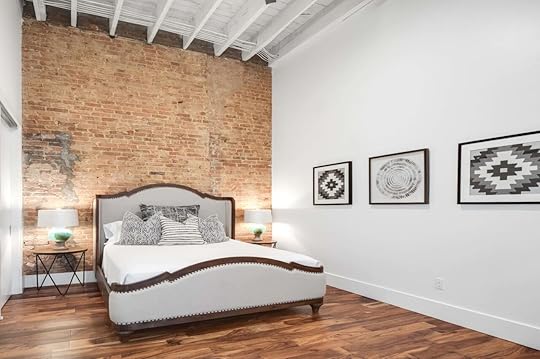
Photo: Airbnb

Photo: Airbnb
Another luxury Airbnb Memphis stay that will have you wanting to stay in Memphis for just a bit longer. This downtown Memphis condo is perfect for couples, solo travelers, and business travelers. You name it. It features a fully stocked kitchen and a large and open living room with floor-to-ceiling windows. The condo is downtown, within walking distance of many Memphis attractions.
Four guests, one bedroom
Price: $169 per night

Photo: Airbnb
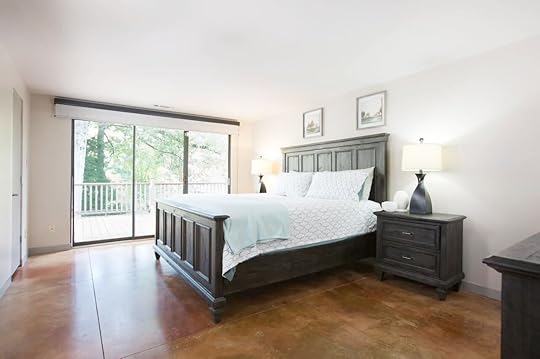
Photo: Airbnb

Photo: Airbnb

Photo: Airbnb
Memphis architect OT Marshall designed this chic home. The secluded home sits on a 1.5-acre peninsula lot with stunning views from every room in the house. The home has a living wing that features the living room, gourmet kitchen, dining room, game room, and library. The home is over 6,000 square feet, has 360-degree views, and is the perfect private getaway.
Fourteen guests, six bedrooms
Price: $650 per night

Photo: Airbnb

Photo: Airbnb

Photo: Airbnb
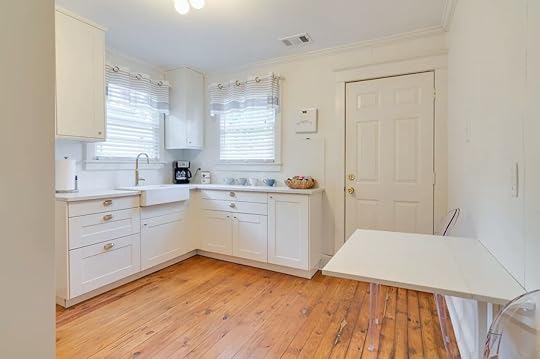
Photo: Airbnb

Photo: Airbnb
Enjoy this newly renovated duplex located in the heart of the trendy Cooper-Young area. This duplex features a living room, a fully equipped kitchen, and a spacious porch and backyard area for relaxing. The home is within walking distance of Bluff City Coffee, Wise Acre Brewery, and other restaurants and bars.
Two guests, one bedroom
Price: $69 per night

Photo: Airbnb

Photo: Airbnb

Photo: Airbnb
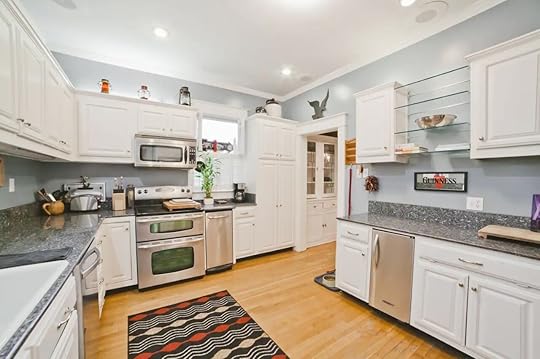
Photo: Airbnb
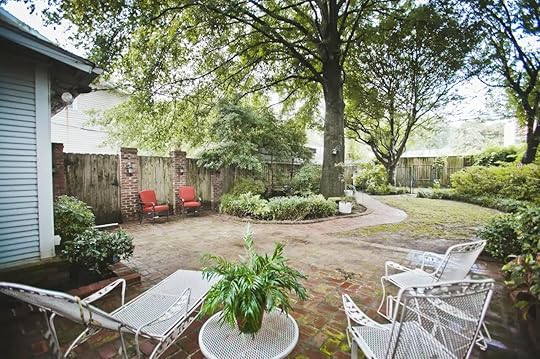
Photo: Airbnb
This classic and funky Memphis spot is 1,500 square feet and has a two-bedroom, and there are two separate lounges spots to relax in. There is a large porch, and there is a private backyard with a pond and waterfall. The home is just ten minutes from Beale Street and other activities. 
Six guests, two bedrooms
Price: $210 per night
Matador Network's Blog
- Matador Network's profile
- 6 followers



